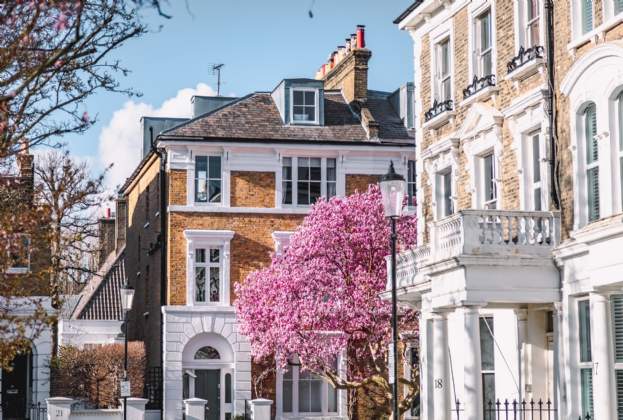The prime rental markets have reverted to pre-pandemic patterns, but as the market cools, a closer alignment between tenants' and landlords' rent expectations will be vital.
Jessica Tomlinson, Associate Director, Savills Residential Research
Prime rents picked up in the second quarter, as the market reverted into pre-pandemic patterns, and the rate of annual rental growth continued to slow.
While rental values are still rising, the annual rate of growth has softened significantly from the highs of the past few years. Market conditions have continued to cool as more stock enters the market and affordability barriers constrain further significant rental increases.
Across prime London, rents increased by 0.7% in the three months to the end of June. This marks an uptick from 0.3% in Q1 but is virtually on par with Q2 2019 (0.6%). That highlights a return to more seasonal trends which were the norm pre-pandemic.
Despite this quarterly uptick, annual growth continued to slow to 2.5%. This is the lowest growth recorded in almost three years (since September 2021) and the seventh successive quarter of deceleration, as the market continues to cool.
Outside of the capital, rents of prime residential properties were up 1.2% in the second quarter. But annual growth again dipped to 2.6%, the lowest level since September 2020.
Over the three months to the end of June, rental growth was strongest across the outer commuter zone (between 30 and 60 minutes commute from London) and South West locations, including the Cotswolds. Here, a typically strong summer market and demand from families helped to support these increases. By contrast, growth was more subdued across regional towns and cities which tend to experience stronger demand in the second half of the year from international tenants, young professionals and students.
Over the second quarter of the year, houses outperformed flats across most parts of the prime rental market.
In London, although stock levels are rising overall, there are still hotspots where houses and larger properties remain in short supply compared to the level of demand. These include West and North & East London regions covering locations such as Chiswick, Ealing, Islington and Shoreditch.
However, South West London was an exception. Here, rental growth for family houses was particularly strong over the pandemic period and, as such, looks to be nearing the end of a strong growth trajectory; as affordability limits the capacity for further significant increases.
Across the prime regional markets, the second quarter marked a shift, with houses starting to once again outperform flats across the majority of locations. The strongest performance for houses was across the South West (1.6%) and regional towns and city markets (1.3%) as seasonal rental demand surged.
Over the past three months, the gap between landlords' and tenants' rental expectations has widened. The misalignment is more pronounced in the capital. Almost two-thirds (63%) of Savills London agents reported that tenants' rental expectations had eased in the second quarter, while the same number (63%) reported that landlords' expected to see continued rental growth over that period.
Across the regional markets, the majority of agents (57%) reported that tenants' rental expectations were unchanged, whereas over a third (38%) reported that landlords' expected to see rents increase.
As some of the heat continues to come out of the market, realistic expectations on price will be vital to securing deals. Landlords will need to ensure properties are presented to the best condition to help them stand out amid more supply. But with greater competition, tenants are unlikely to see landlords accept offers significantly below asking rents.
The pre-pandemic norms of seasonality have continued to play out across the prime rental market over the second quarter of the year. And while we expect rents to continue to increase over 2024, the rate of growth will likely be more subdued than we have seen in the past few years, given affordability constraints and more balance between supply and demand.
We expect the market to continue to re-balance, as demand returns to typical seasonal patterns. As such, growth is likely to be muted towards the end of the year, in line with a regular winter slowdown.
However, the 2024 King’s Speech included Labours plans for the newly named Renters’ Rights Bill (formally known as the Renters (Reform) Bill). This certainly has the potential to temper any increase in available stock. Read on to find out more about what is next for rental reform and what it might mean for the prime rental market.
< To find out more about what is next for renters reform, please read more here
.jpg)
